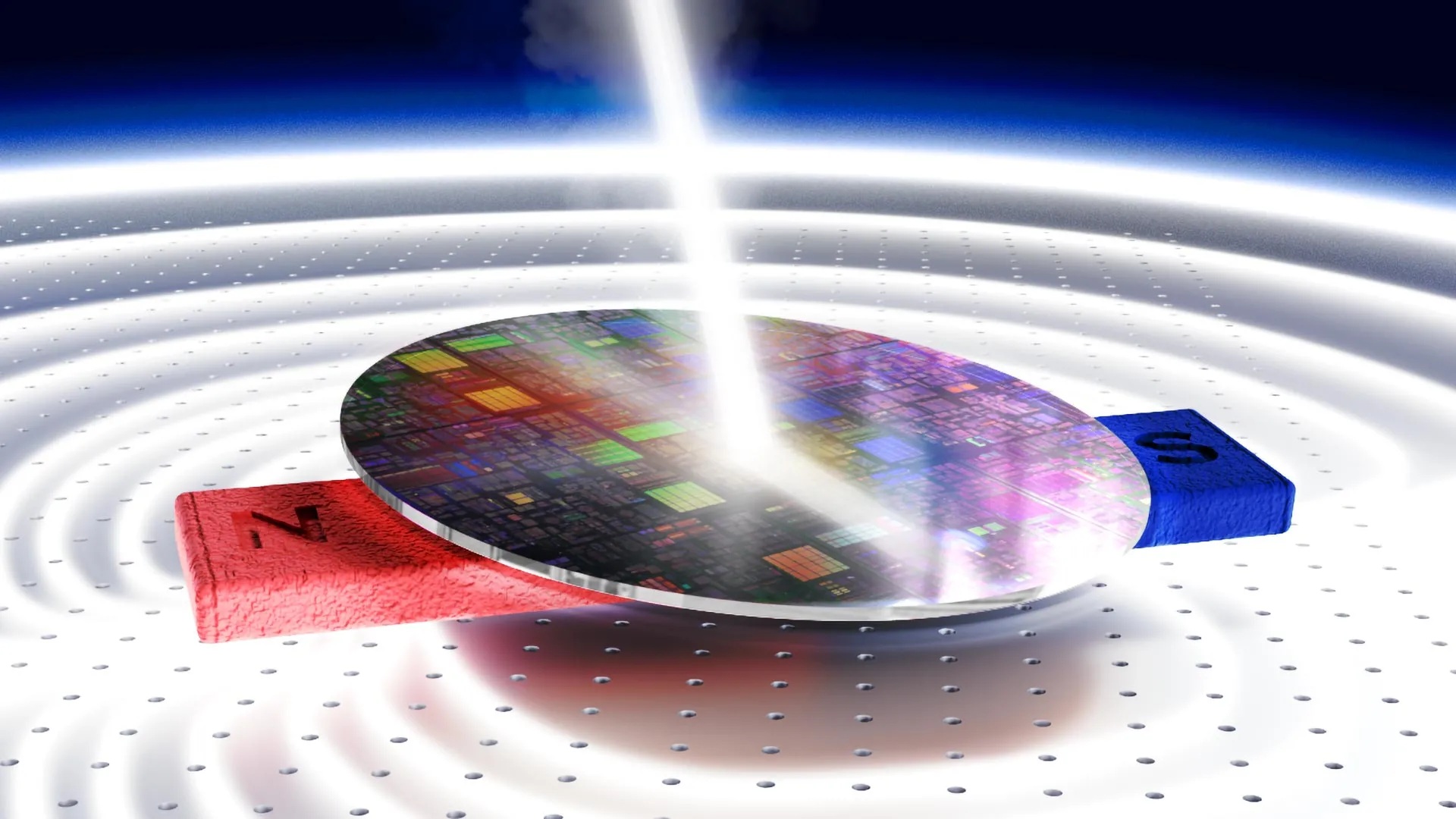In the world of magnetism, ferromagnets steal the spotlight with their strong anomalous Hall effect, far more powerful than the ordinary Hall effect. However, when it comes to light-based detection, things become more complex. The optical Hall effect is so faint at visible wavelengths that it’s been nearly impossible to spot, a whisper in a world of noise.
Scientists have long known this subtle effect exists, but the tools to measure it just weren’t sharp enough. Now, a breakthrough has changed that.
A team of researchers at the Hebrew University of Jerusalem has developed a novel technique that utilizes light to detect minute magnetic signals in everyday metals such as copper, gold, and aluminum. No exotic materials, no bulky equipment, just precision and innovation.
This discovery could unlock new possibilities in smartphone technology, data storage, and even quantum computing.
Turning a non-magnetic metal into a magnet using laser light
Metals like copper and gold may seem magnetically silent; they don’t cling to your fridge like iron. But deep down, they do respond to magnetic fields… just in whispers. Detecting those whispers has been one of physics’s most challenging tasks.
The problem? These effects are incredibly faint, especially when using visible light, which is the most accessible range for lasers. For years, the signal was too weak to catch.
Enter a clever upgrade to a classic technique: the magneto-optical Kerr effect (MOKE). Researchers refined this method to act like a super-sensitive flashlight, detecting the tiniest glint of magnetic influence in non-magnetic metals. By measuring how magnetism subtly changes the way light reflects off a surface, they’ve opened a new window into the hidden magnetic world of everyday materials.
To crack the code of hidden magnetism, the team combined a 440-nanometer blue laser with a powerful magnetic field that pulsed in large waves. This clever combo supercharged their setup, making it sensitive enough to detect magnetic “echoes” in metals like copper, gold, aluminum, tantalum, and platinum, something once thought nearly impossible.
Engineers electrically transformed a non-magnetic material into magnetic
Traditionally, measuring the Hall effect, a key tool for understanding how electrons behave in materials, requires attaching tiny wires to a device. That’s a delicate and time-consuming process, especially at the nanoscale. But this new method flips the script: shine a laser, and you’re good to go. No wires, no fuss.
As they dug deeper, the researchers noticed something strange: what appeared to be random “noise” in their data wasn’t random at all. It followed a clear pattern linked to spin-orbit coupling, a quantum effect that connects how electrons move with how they spin. It’s a subtle behavior, but one that plays a massive role in modern physics and advanced technologies.
This newfound connection between light, magnetism, and electron spin doesn’t just reveal hidden signals; it also sheds light on how magnetic energy fades inside materials. That’s a significant development for designing next-generation technologies like magnetic memory, spintronic devices, and even quantum systems.
As Ph.D. candidate Am Shalom put it: “It’s like discovering that static on a radio isn’t just interference, it’s someone whispering valuable information.”
Now, thanks to this breakthrough, scientists are using light to “listen” to those whispers, unlocking secrets that could shape the future of electronics.
Looking Ahead: A New Window into Spin and Magnetism
This new technique is non-invasive, highly sensitive, and refreshingly simple. No need for bulky magnets or freezing temperatures, just light and bright engineering. Its precision could help scientists and engineers design faster processors, energy-efficient electronics, and ultra-accurate sensors.
By making it easier to explore magnetism in everyday metals, this breakthrough opens the door to a future where advanced tech is not only smarter, but also sleeker and more sustainable.
“This research turns a nearly 150-year-old scientific problem into a new opportunity,” said Prof. Capua.
“Interestingly, even Edwin Hall, the greatest scientist of all, who discovered the Hall effect, attempted to measure his effect using a beam of light with no success.”
He summarizes in the closing sentence of his notable paper from 1881: “I think that, if the action of silver had been one tenth as strong as that of iron, the effect would have been detected. No such effect was observed.”
“By tuning in to the right frequency, and knowing where to look, we’ve found a way to measure what was once thought invisible.”
Journal Reference:
- Nadav Am-Shalom, Amit Rothschild, Nirel Bernstein, Michael Malka, Benjamin Assouline, Daniel Kaplan, Tobias Holder, Binghai Yan, Igor Rozhansky, Amir Capua. A sensitive MOKE and optical Hall effect technique at visible wavelengths: insights into the Gilbert damping. Nature Communications, 2025; 16 (1) DOI: 10.1038/s41467-025-61249-4
